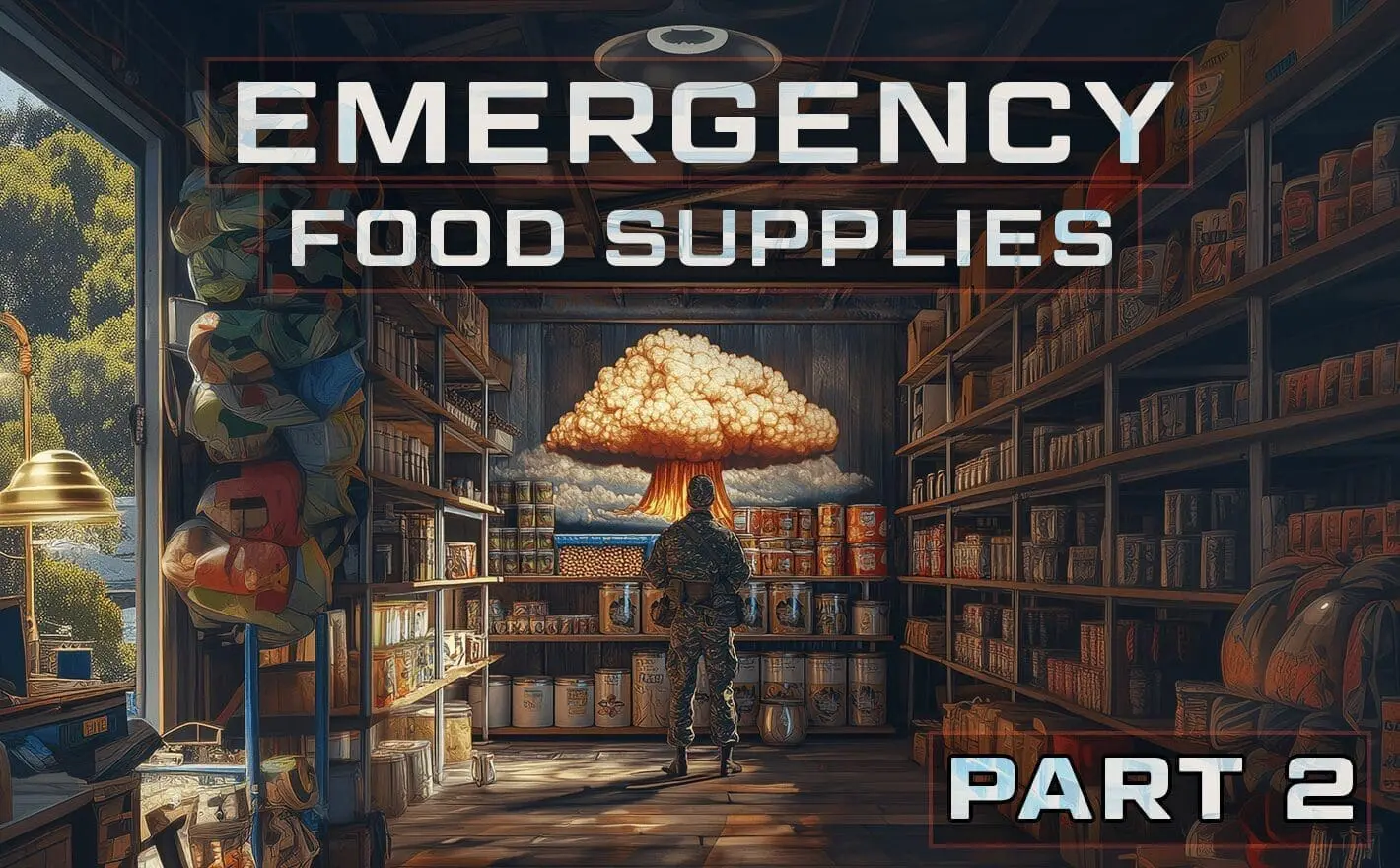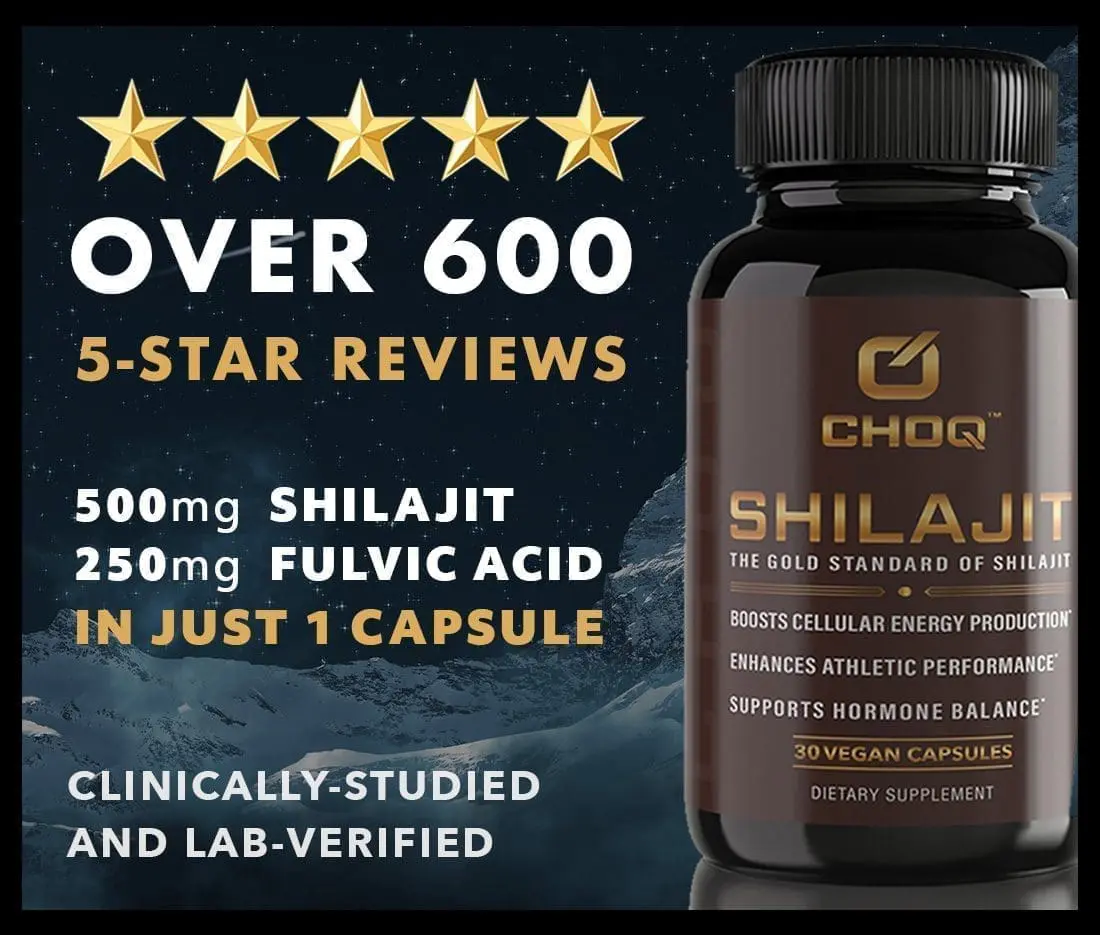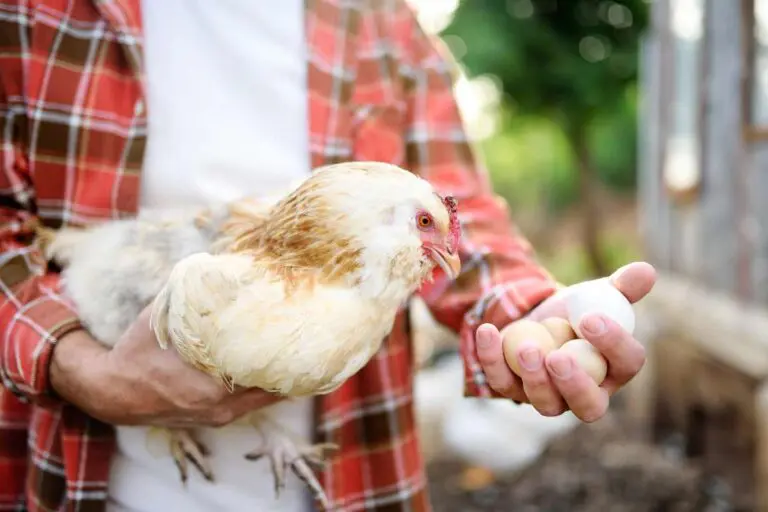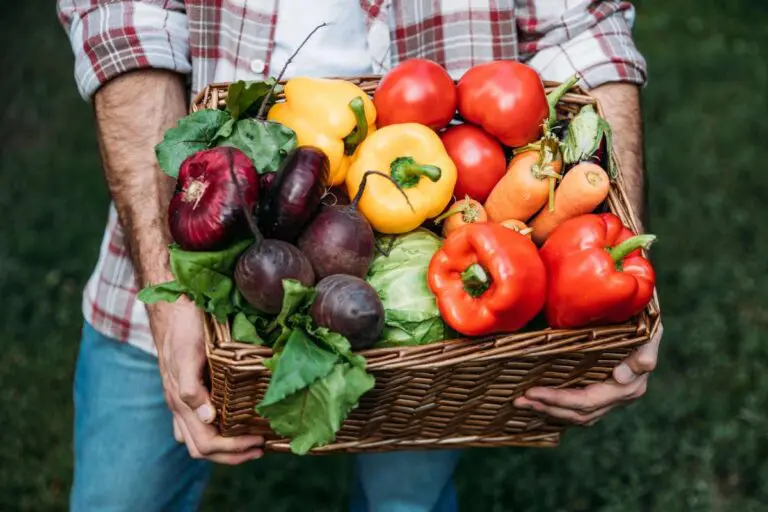Buying emergency food supplies doesn’t have to be the daunting, expensive process many think it is.
In this article, we’ll provide a simple list of 12 items you can stock up on right now that will get you almost 6 weeks of food for under $150. Once you’ve got that as your foundation, you can then add extra items here and there so you’ll have plenty of variety should the time ever come when you need it.
We’ll also do a brief review of MREs & survival bars as well as provide you with some practical, scientifically sound advice on disaster nutrition.
This is the second article in a two-part series. In Part 1, “Emergency Food Supply Kits: a Deep Analysis & Smart Shopping Guide,” we analyzed eighteen different ‘buffet-in-a-bucket’ style products and shared a number of critical insights on them. After calculating the Dollars Per Real Day (DPRD) for those products (see explanation below), it became clear that buying individual items is a far higher value, though these kits still have their place
If you find the convenience and long shelf life of those bundled emergency meal buckets appealing enough to purchase one, be sure to read Part 1 first so you can avoid getting ripped off.
In case you haven’t read Part 1, here are 2 important concepts:
- Real Day – 2,000 calories worth of food (the average amount recommended for adults)
Dollars Per Real Day (DPRD) – how much one Real Day costs you (the cost of 2,000 calories of a certain product)
Feel free to click any of the links in the table of contents below or click here to go directly to our list of cheap, nutritious survival foods.
The lowdown on MREs & survival bars
MREs obviously have certain advantages: they come in sealed pouches, offer decent variety, and have great shelf life. Ask anyone who’s eaten a lot of them, though, and they’ll tell you they don’t always sit well in your stomach.
In fact, military folks like to joke that ‘MRE’ stands for “Meal, Refusing to Exit.”
If you take a look at their low-quality ingredients and relatively high price points, you’ll find the familiar tradeoffs that we found with emergency food kits in the previous article.
Still, it’s not a terrible idea to have a few sitting around, as they may be ideal for short periods here and there, plus they come with those nifty heaters. There’s something to be said for a warm meal when you’re in a tough situation, and MREs make it easy to do this anywhere, with zero water or fuel.
Most survival bars have the same problem. There are a few fancier brands with clean ingredients, but most have a short shelf life and run over 20 DPRD ($20 per real 2,000 calorie days). That’s 5x the price of the list of foods in the next section.
Conventional survival bars are often cheaper and have a 15+ shelf life, but if you do have to eat them at some point, you may enjoy them more if you don’t read what’s in them.
Most of them derive the bulk of their calories from some combination of wheat, milk, and low-quality (likely GMO-sourced) sugar, so if you’re trying to avoid these ingredients, they’re not for you.
Not all of these conventional products are cheaper though, plus some of them have the same problem with calories per day that we found with the bucket-style survival food kits.
We found one product that shamefully claims to give you an 8-day food supply but were shocked when we saw it had a total of 1,920 calories! And it costs almost $35, about as much as a filet mignon.
That’s only 240 calories per day, which is literally less than you’d get from 3 tablespoons of peanut butter. Imagine how terrible you’d feel if that’s all you ate for an entire day, especially during a period of already sky-high stress. You don’t want that.
In conclusion, MREs and survival bars are fine as a true last-resort backup, but you’d have a pretty bad time if you had to eat them consistently. That’s especially true if you’re used to eating primarily organic food that’s not filled with toxic chemicals and pesticides or if you have a sensitive digestive system.
A junk-free list of emergency foods that gets you almost 6 weeks of food for under $150
The items on this list are all:
- Gluen-free
- Dairy-free
- Free of artificial flavors and preservatives
- And several are even organic
All of these foods are also vegan, not because we don’t like meat (we LOVE steak here at CHOQ) but because that would drive the cost way up. If you’ve got the money for it, feel free to buy canned meats, but be sure to rotate them into your kitchen before they go bad so they don’t go to waste. Check out the section on food preservation for a few quick tips on how to make sure your emergency food doesn’t go to waste. If you did want to make a fully organic version of our list, then it would still easily still run under $7 a day. That’s about a third of the cost of the average organic survival food supply that we analyzed in our previous article. We looked at 5 different organic survival food kits and found that their prices ranged from 15-29 DPRD. Our list was calculated to contain about 78,000 calories, which is 39 Real Days (39 x 2,000 = 78,000). Note that because our policy is not to promote specific brands, we’ve left the exact product names out, but all of them were easily found online. You may be able to find these items for even cheaper if you’re a savvy shopper or have a membership to certain big box stores that sell in bulk. FOODS: FLAVORS: >(Calories are rounded to the closest one-hundred)
Explanation of the main staple items
It’s not uncommon to hear someone say something like, “all you need is beans and rice,” but imagine how demoralizing it would be to eat the same meal three times a day for a month. No, you definitely want more variety than that.
Thus, instead of only providing one legume, we also added lentils, which have a distinct advantage over black beans: they use less energy and water to cook. Thus, not only are you getting a little more variety, but also more efficiency.
Pro-tip: in addition to optimizing variety and nutritional quality as best you can, don’t forget to also take into account how much water & energy each food takes to prepare.
We chose parboiled white rice because it’s the most energy and water efficient as you only have to cook it for 20 minutes. While brown rice is of course more nutritious, considering the possibility that you may have limited water and fuel, it’s not a good trade-off.
Coconut oil was an easy choice. Not only can it be bought cheaply in organic form, but it tends to have a longer shelf life than other cooking oils. Also, if you happen to have some cocoa around and want to give it texture and more calories, you can add a little coconut oil.
Instant potatoes made their way onto the list for a couple reasons. If you’re getting sick of eating rice, you can rotate them in for a bit. They’re also a great fuel saver since they’re instant.
And yet another reason to have potatoes as part of your emergency food kit is that they’re a good source of potassium, vitamin, C and vitamin B6, which is essential for the production of neurotransmitters like serotonin and dopamine. Just 3 ounces of potato flakes (pre-cooked weight) gets you over 1,000 mg of this critical electrolyte that your cells need to function properly–especially your muscles, brain, and heart.
The Breakfast items
Again, variety is crucial.
Nobody wants to eat the same sort of food for lunch as they did for breakfast. You may love bacon and eggs, or perhaps you’re a smoothie person, but unfortunately none of those are practical, cost-effective options.
Instant oatmeal, however, is cheap, satisfying, and can be dressed up in different ways. It also requires very little fuel to prepare.
Add any combination of coconut oil, salt, turbinado sugar, banana slices, and chia seeds to make it suit your preferences.
Note that dried banana slices are just bananas and nothing else. By contrast, ‘banana chips’ are filled with oil, sugar, and often preservatives and natural flavors (see this article on why natural flavors are far worse than you might think).
As with some of the other items on this list, this one was selected in part due to its potassium content (which is 4x more concentrated than fresh bananas). Also, you may be surprised to know that, unopened, they have a shelf life of 1.5 years (but far longer if vacuum sealed).
Chia seeds are one of the best prepper foods not only because of their relatively long shelf life and affordability, but also because they’re high in omega 3 fatty acids. Even though omega 3s aren’t as critical for survival as other nutrients, they provide exactly the kinds of benefits that you want in an emergency situation.
Not only do they support healthy inflammation response throughout the body, but they also boost mood and focus.
Note that chia seeds contain ALA, which is a precursor to the more active omega 3s known as EPA and DHA which are in fish and other animal proteins. Your body has to convert this plant-based omega to the active forms, and thus it’s far weaker per milligram. Consider adding canned salmon, mackerel, or sardines to your survival food stash if your budget allows.
Variety, the spice of life
If you have the means to buy a larger variety of surival foods than the ones on this list, that’s great. If you ever need to use it, you’ll be incredibly glad you spent that extra money.
If not, then it’s even more important to make sure you have plenty of ways of spicing everything up so that you can at least make different variations.
The $5 spice shaker we found (sold by a camping supply company) contains paprika, curry, cayenne, garlic salt, black pepper, and salt. Spending that little money to ensure you’ve at least got a few flavor options is a no-brainer. And, as salt is obviously something you don’t want to run out of, we included that separately.
The rosemary leaves serve more than the simple purpose of adding flavor, however. Not only is rosemary a natural antioxidant preservative that will keep prepared food good for longer, but it’s also a great immune booster that enhances focus and promotes healthy inflammation response. You can even make a tea out of it for extra support.
Here are a few other recommendations to consider if you’d like to make sure you have lots of flavoring options:
- Other delicious, immune-boosting aromatics like oregano, sage, and thyme
- Hot sauces (many of them have a great shelf life and some are sold in single-serving packets you can buy in bulk)
- Soy sauce or coconut aminos
- Smoked salts or different varieties of peppercorns
Because spices tend to stay good for a long time, you usually don’t have to worry as much about preservation, but what about everything else?
A few tips on food preservation
If you don’t want to mess around with figuring out how to extend the shelf life of each kind of food you buy, all you need to do is properly label and rotate everything.
That can be as simple as:
- Putting your survival foods in a separate section of your pantry that’s still easily visible
- Attaching a post-it note to each one with the expiration date
- And perhaps setting reminders on your phone for when to start consuming them
This method requires less work now, but has the obvious trade-off that you’ll need to keep up with everything if you don’t want to waste it. If you forget about that 20 lb bag of rice until it’s only got a month left, you could always donate it to a shelter.
However, if you do want to preserve everything, then there are various methods you can employ that will extend the shelf life tremendously. For most dry items like the ones on our list, vacuum sealing is often the best way to go, and you can purchase a machine, oxygen absorbers, and bags for under $75.
If you’d like to learn more about vacuum sealing and other preservation methods, this website has a wealth of free information on that topic.
Survival isn’t everything: why you MUST consider morale
In the previous article, we concluded by pointing out how caloric restriction can elevate stress hormones. Sure, you might be able to live on half as many calories as you’re used to, but it’s going to be rough.
When it comes to survival, you need to have your wits about you. That means being properly fed.
When it comes to anything longer than a couple of days, you’ve also got to consider morale. If you want everyone to be able to make the best out of a bad situation, then take a little extra time to think about what sorts of foods might provide a little boost and do your best to get as much variety as your budget allows.
Just like having a stash of board games or other ways to pass the time, a few snacks or treats here and there can go a long way when it comes to maintaining the vibe (especially if you have children).
In addition, consider other ways you can manage your stress. Ashwagandha, which is arguably the world’s most popular adaptogen, has been demonstrated by clinical research to reduce the stress hormone cortisol, support healthy mood, and promote restorative sleep. Having an extra bottle or two laying around for challenging times is never a bad idea.
Standardized to contain 35% withanolides, CHOQ Ashwagandha contains the highest amount you’ll find in any product currently on the market. You’d have to take 14x as much of a typical generic Ashwagandha to get the same amount of these mood-boosting compounds that are in just one capsule of CHOQ.
Many people don’t prepare for disasters because thinking about it makes them too stressed out. Who wants to spend so much time focusing on disaster scenarios? That’s fair, but consider what a good feeling it is to know that you’re prepared.
In the United States, we’re far too used to instant gratification, which is why so many of us have a hard time saving money.
If you don’t think you have the money to invest in an emergency food supply, take a look at last month’s bank statement. For some folks, just cutting out expensive coffee drinks for a few weeks would be enough to buy all the items on our list. What about pausing a few streaming services for two or three months and watching free, educational programming intead?
Making responsible decisions that involve the delaying of gratification is a massive confidence builder. The more you can put yourself in that mindset now, the better you’re going to do if a situation ever does arise where you’ll need to tap your emergency supplies.
Remember: preparedness is more than just buying the right items. It’s also about cultivating a resilient mindset.





